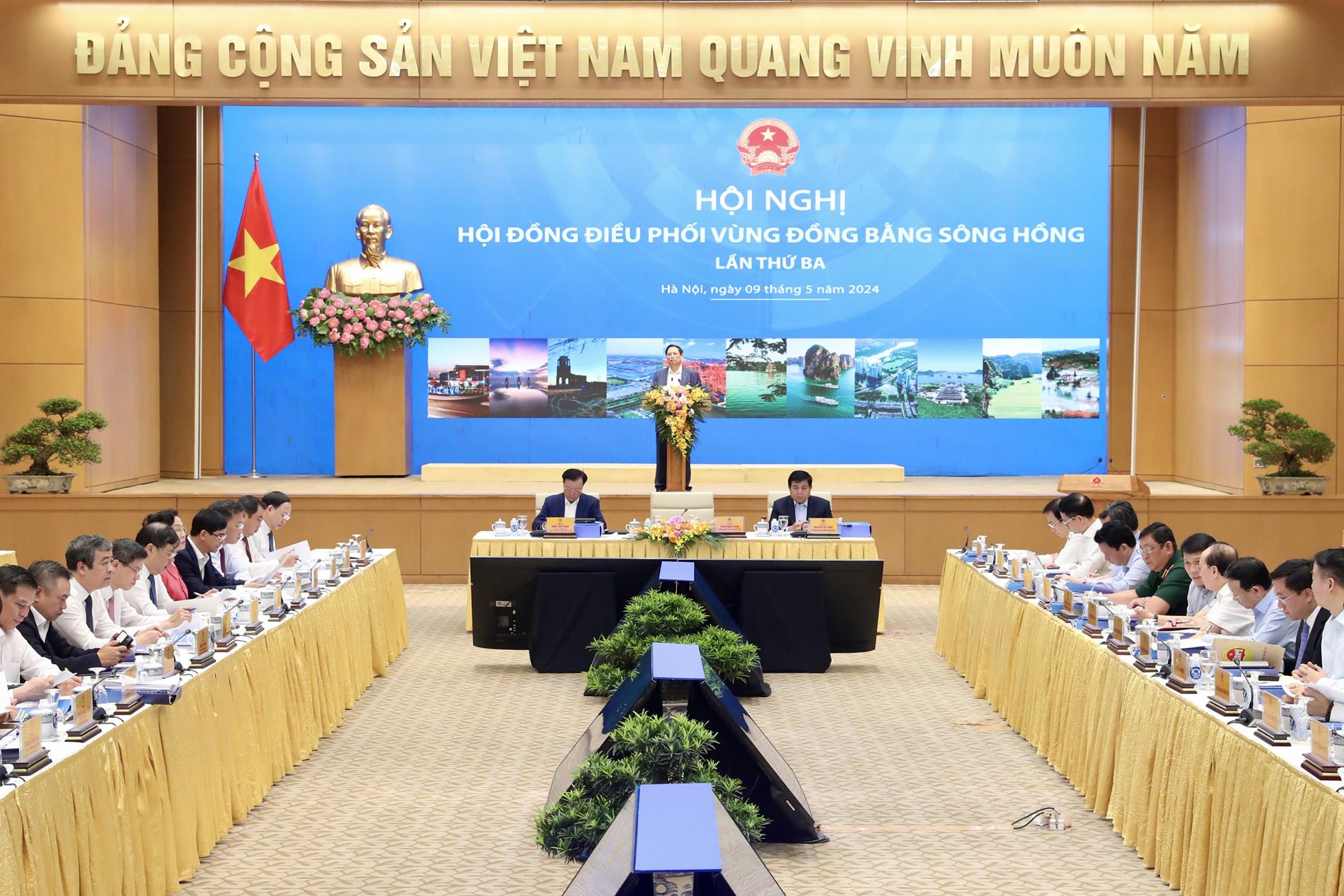(MPI) - The third meeting of the Red River Delta Region Coordinating Council and announcing the region’s planning for the 2021-2030 period, with a vision to 2050 took place on May 9.
 |
| Prime Minister Pham Minh Chinh addresses the meeting. Photo: MPI |
Prime Minister Pham Minh Chinh hailed the Ministry of Planning and Investment (MPI) and the planning appraisal council members for their efforts in drafting the regional planning, a crucial task for the nation. This meeting is a four-in-one event, including the announcement of the Red River Delta region’s planning in the 2021-2030 period, with a vision to 2050; a review of the one-year implementation of the Politburo Resolution No. 30-NQ/TW dated November 23, 2022 regarding the development of the region and the Government’s Resolution on the action plan to realise the Politburo’s resolution; reports on the region's special mechanisms and policies; and the 2024 regional coordination plan as well as evaluation of the region’s key projects.
The planning for the Red River Delta Region highlights six strategic and core viewpoints, including: a important strategic location, serving as a primary development driver and leading the economic restructuring and growth model transformation process; developing and restructuring the regional economy based on science, technology, innovation, and digital transformation; harmoniously developing the economy alongside cultural advancements, achieving social progress and equity.
Furthermore, the planning mentions of developing a synchronised and modern infrastructure system, ensuring efficient, effective, and unified spatial organizstion; effectively using resources; ensuring energy and food security, water sources, and environmental protection; closely integrating socio-economic development with national defense and security; enhancing foreign relations and international integration effectiveness.
The planning sets forth goals by 2030 to rapidly and sustainably develop an economy with a rational structure, deeply imbued with national cultural identity; a modern, environmentally friendly industry, agriculture, and service sector; an enhanced material and spiritual life for the people.
The region is striving to become the national center for high-quality education and training; leading in the development of science and technology, innovation, digital economy, and digital society; having synchronised, modern infrastructure and smart cities with high connectivity.
By 2050, the region plans to develop a modern, civilized, ecological, high-income region, becoming a global and regional economic and financial center as well as a national leader in culture, education and training, science and technology, and innovation, with Hanoi becoming a global connectivity city. The region also aims to develop harmoniously and comprehensively socio-economic situation and culture that on par with developed country’s capitals in the region and the world.
 |
| Minister of Planning and Investment Nguyen Chi Dung speaks at the meeting. Photo: MPI |
The plan includes six major solutions for the effective implementation, including a breakthrough solution is to perfect regional linkage institutions, enhancing the effectiveness of the Red River Delta Regional Coordinating Council’s operations.
Alongside, it is important to clearly define the management functions of state and business production in line with a socialist-oriented market economy, establish a close coordination mechanism among ministries, sectors, and localities in policy development and enforcement, and promptly address inconsistencies and ineffective legal regulation enforcement.
Minister of Planning and Investment Nguyen Chi Dung said at the meeting that positive results have been recorded in socio-economic development in the region. Regarding 20 important projects in the region, seven out of those have been launched, eight of those are the procedure stage and the remaining are under study. Prime Minister has directed to prioritise resources for implementing several large-scale projects such as Ring Road No.4 in Hanoi Capital Region and the Ninh Binh - Hai Phong Expressway.
The region’s state budget revenue was estimated at over 720 trillion VND last year, raking the first of the country ( while the Southeast region estimated at 689 trillion VND), and foreign direct investment (FDI) was estimated at 17.382 billion USD (above the Southeast region of 11.394 billion USD), with 5 out of 11 localities in the region among the top 10 nationwide.
The region’s gross regional domestic product (GRDP) last year reached 6.28%, ranking third in the six major economic regions (after the Northern Midlands and Mountains, and the Mekong Delta), 1.24 times higher than the national average (with the country growing at 5.05%).
The region’s economic size has topped 3.100 trillion VND, accounting for 30.1% of the nation’s GDP and ranking second among the six major economic regions (after the Southeast Region at 30.2%); GRDP per capita reached 131.9 million VND, ranking second in the country (after the Southeast Region at 166 million VND)./.
Bao Linh
Ministry of Planning and Invesment